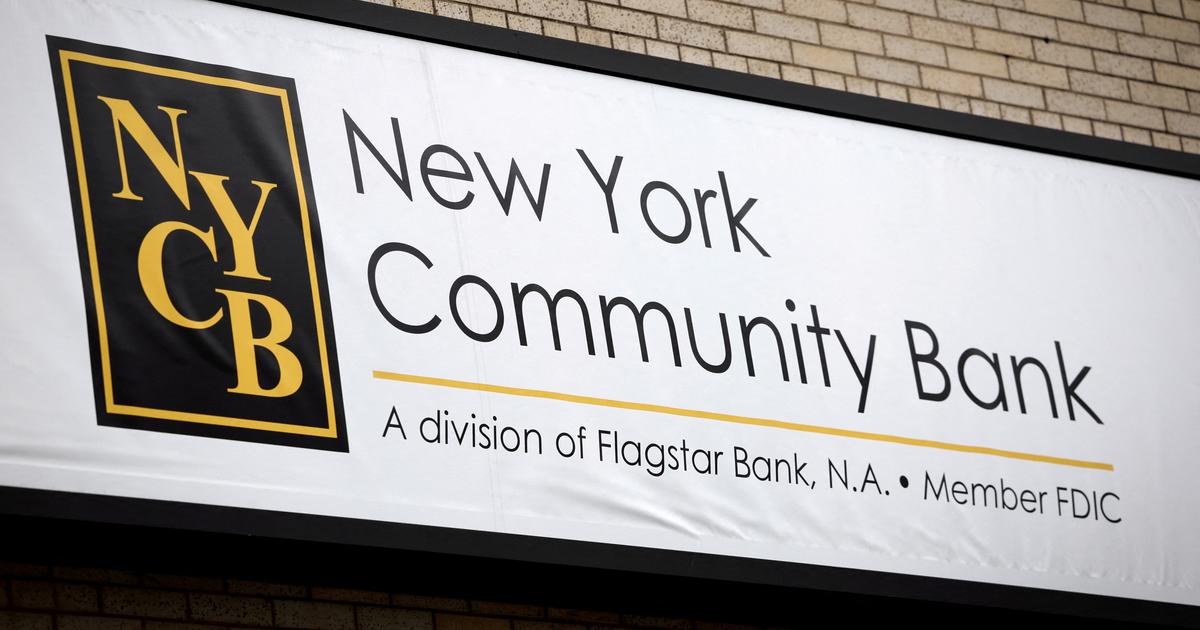Federal regulators scrambled on Sunday to contain the fallout from the failure of
Silicon Valley Bank
, with the government holding an
auction
to try to sell the failing entity and policymakers considering other options to ensure depositors get their money back.
The
Federal Deposit Insurance
Corp.
took over the entity on Friday, putting nearly $175 billion in customer deposits under the regulator's control.
Treasury Secretary Janet Yellen testifies during a hearing on Capitol Hill in Washington on March 10, 2023. (Valerie Plesch/The New York Times)
The bank's failure, the biggest since the depths of the 2008 financial crisis, has raised concerns
that
other financial firms could suffer similar fates as
rising interest rates
put pressure on the banking sector and nervous depositors hunker down. They plan to withdraw their money.
Although customers with deposits of up to $250,000 - the maximum covered by FDIC insurance - will be compensated, there is no guarantee that depositors with larger amounts in their accounts will be fully reimbursed.
This reality
shook the banking sector
over the weekend.
Government officials and economists feared that people with large accounts at other regional banks would start to fear for the safety of their own deposits, which could lead them to withdraw their money and run for perceived safety at even bigger banks.
This, some warned, could turn what would otherwise be a one-off bank failure into a
widespread crisis.
The key question is
"Is this going to be managed in a way that eases concerns and avoids runaways?" said Kristin J. Forbes, an economist at the Massachusetts Institute of Technology.
As Treasury Secretary
Janet Yellen
tried to reassure Americans - declaring on CBS's "Face the Nation" that the banking system was "safe and well capitalized" - regulators scrambled behind the scenes to find a solution. way to
isolate the system
before US markets opened for the week on Monday morning.
The FDIC kicked off an auction of Silicon Valley Bank on Saturday that was due to conclude Sunday afternoon, according to a person familiar with the matter.
Bloomberg previously reported the auction news.
And if that drive to find a buyer failed, the government was considering safeguarding uninsured deposits at the bank, another person said.
But no decision had been made.
As the Treasury, Federal Reserve, FDIC and White House pushed for a solution, economists and politicians feared that companies with large uninsured bank deposits would be nervous as some Silicon Valley Bank clients faced losses. , which would lead them to withdraw their own deposits from other regional banks.
"The risk is for the
regional banks
, that their assets will flee," said Rep. Ro Khanna, D-Calif.
He and other members of the state's congressional delegation joined a call with FDIC officials Saturday night around 11 p.m. in Washington to discuss the situation.
Khanna said the regulator was focused on finding a buyer for the bank.
But if that failed, he said the government needed to find a way to promise all depositors would be
fully
reimbursed by the time the markets opened Monday morning.
As of Saturday night, the FDIC was only willing to commit to
partially returning
money to depositors.
"We said that this was not going to be enough," Khanna said in an interview.
"There have been too many ball passes between the FDIC, the Treasury and the Fed, the reality is that these things happen by consensus."
Throughout the day on Sunday, officials tried to determine what tools the government had at its disposal to cushion the impact of the failure of Silicon Valley Bank.
The first option appeared to be a sale:
Kevin McCarthy
, Speaker of the House of Representatives, said that the "best outcome" would be for someone to acquire the failing bank.
"I'm hopeful that something can be announced today," said McCarthy, who said he spoke with Fed Chairman Jerome Powell and Yellen on Fox News' "Sunday Morning Futures With Maria Bartiromo."
But the sale of Silicon Valley Bank
was not guaranteed to be successful
, nor was it the only possible avenue for the government to take.
The main backup plan being considered by analysts was the possibility that the FDIC would find a way to return the money to depositors in full.
Although the regulator is usually required to break up failing banks as cheaply as possible - which means leaving the private sector to bear the losses of uninsured deposits - it can get around it by using what is called a "risk exception"
. systemic
."
This rule, which was used repeatedly during the 2008 crisis, essentially allows the government to reimburse
uninsured depositors
if failure to do so would have serious adverse consequences for the economy or financial stability.
But invoking the exception requires overcoming a number of hurdles:
The Secretary of the Treasury, in consultation with the President, the FDIC, and the Federal Reserve Board, must approve the decision to use it.
Getting the necessary two-thirds of the six incumbent members of the Federal Reserve board to agree to such a plan could be challenging, experts say.
"If the Fed gives the go-ahead, I would think the Fed really sees it as systemic," said Steven Kelly, a senior research associate in the Yale Program on Financial Stability, explaining that it was not clear that the Silicon Valley Bank failure is indeed a threat to the stability of the broader financial system at this time.
"They tend to take determinations very seriously."
Some economists suggested that the Federal Reserve could also help contain any problems with some kind of
emergency support
program , which the central bank can use to funnel short-term cash to borrowers in need during unusual times of market disruption. with the approval of the Secretary of the Treasury.
But a central bank program might not be attractive in the current situation:
The Federal Reserve's emergency loan programs make loans, not payments.
There are limitations to these programs that insist that they must be broad-based and that prevent their use by insolvent companies.
And even if depositors are not refunded in full, there are other steps regulators could take to reassure investors about the safety of the system.
"I think the most urgent task is to reassure uninsured depositors more broadly," said Daleep Singh, chief global economist at PGIM Fixed Income and a former economic official in both the Biden administration and the New York Fed.
To do this, the Federal Reserve could emphasize that banks can resort to the so-called Federal Reserve discount window.
That program allows commercial banks to take investment-grade securities - including Treasuries - and pledge them to the Fed in exchange for cash to meet short-term liquidity needs.
Banks often shy away from the discount window because they think that using it could signal that they are in a weak position.
But in 2020, when the coronavirus paralyzed much of the economy, the Federal Reserve tried to encourage entities to use it by making its conditions more attractive.
Back then, a group of big banks used it in concert to try to stress that using it
was not a sign of weakness.
The Federal Reserve should "put the discount window on flashing neon lights," Singh said.
c.2023 The New York Times Company
look too
The IMF predicts that the world economy will grow less this year
The risk of a global crisis due to financial contagion




/cloudfront-eu-central-1.images.arcpublishing.com/prisa/HEDL2EH5ZFDPDOL7RYY65YOJQA.jpg)




